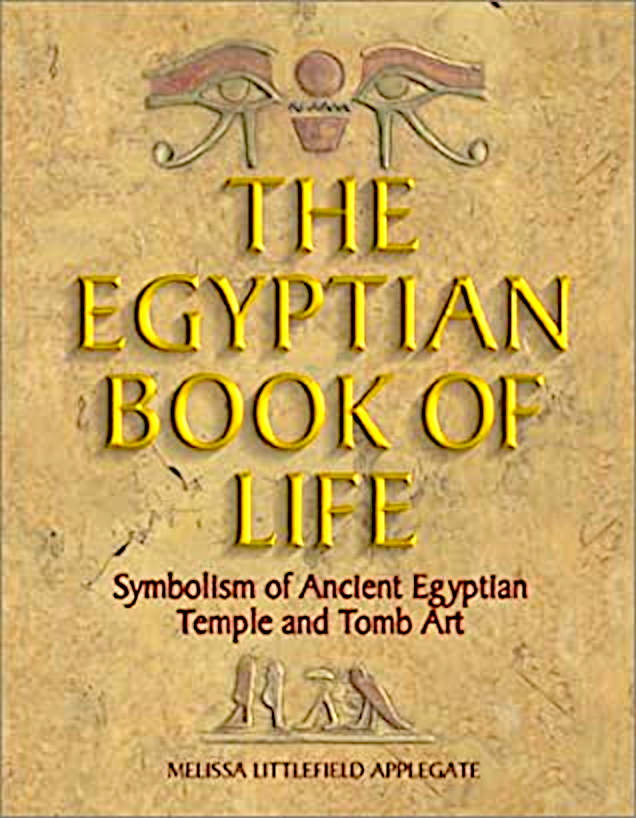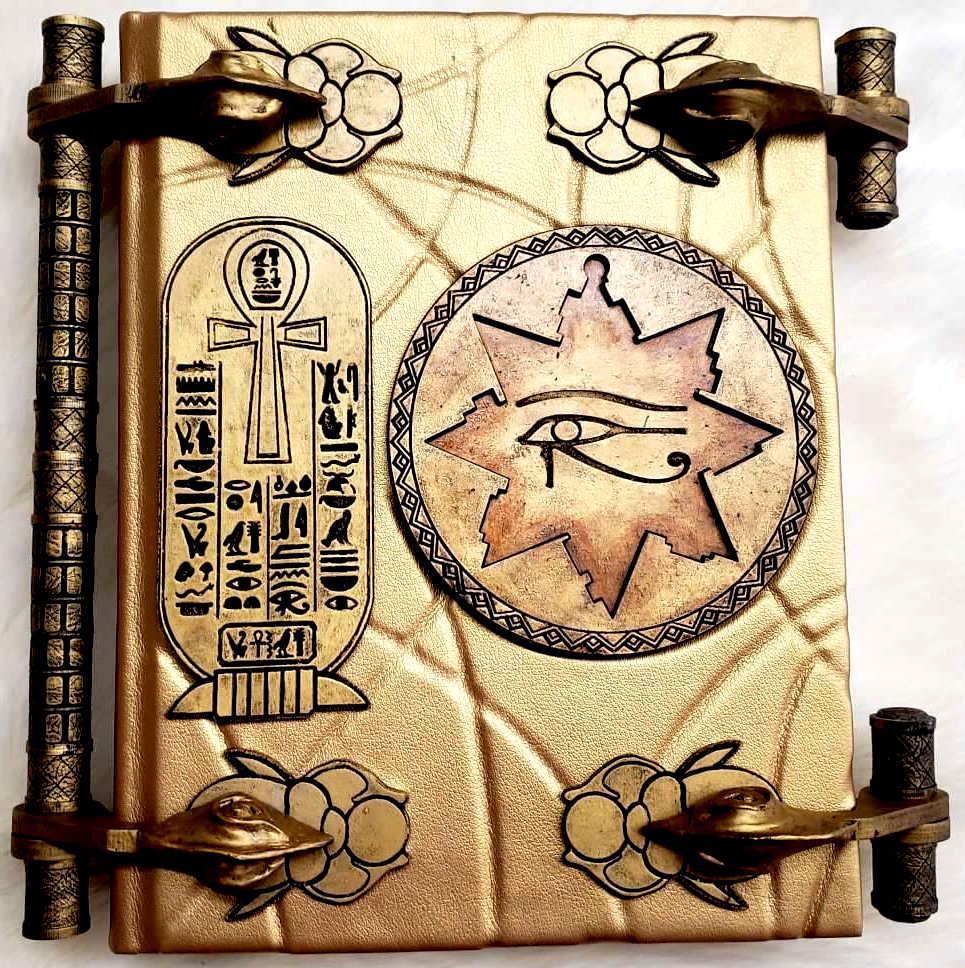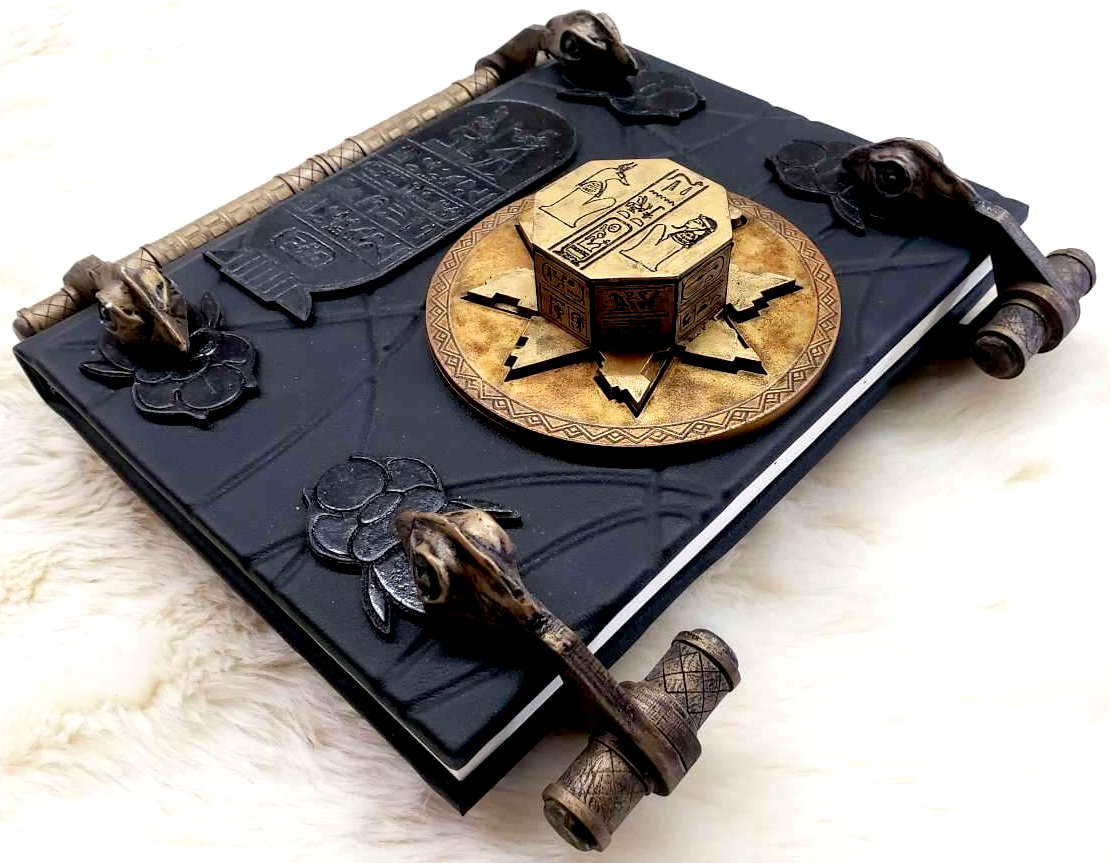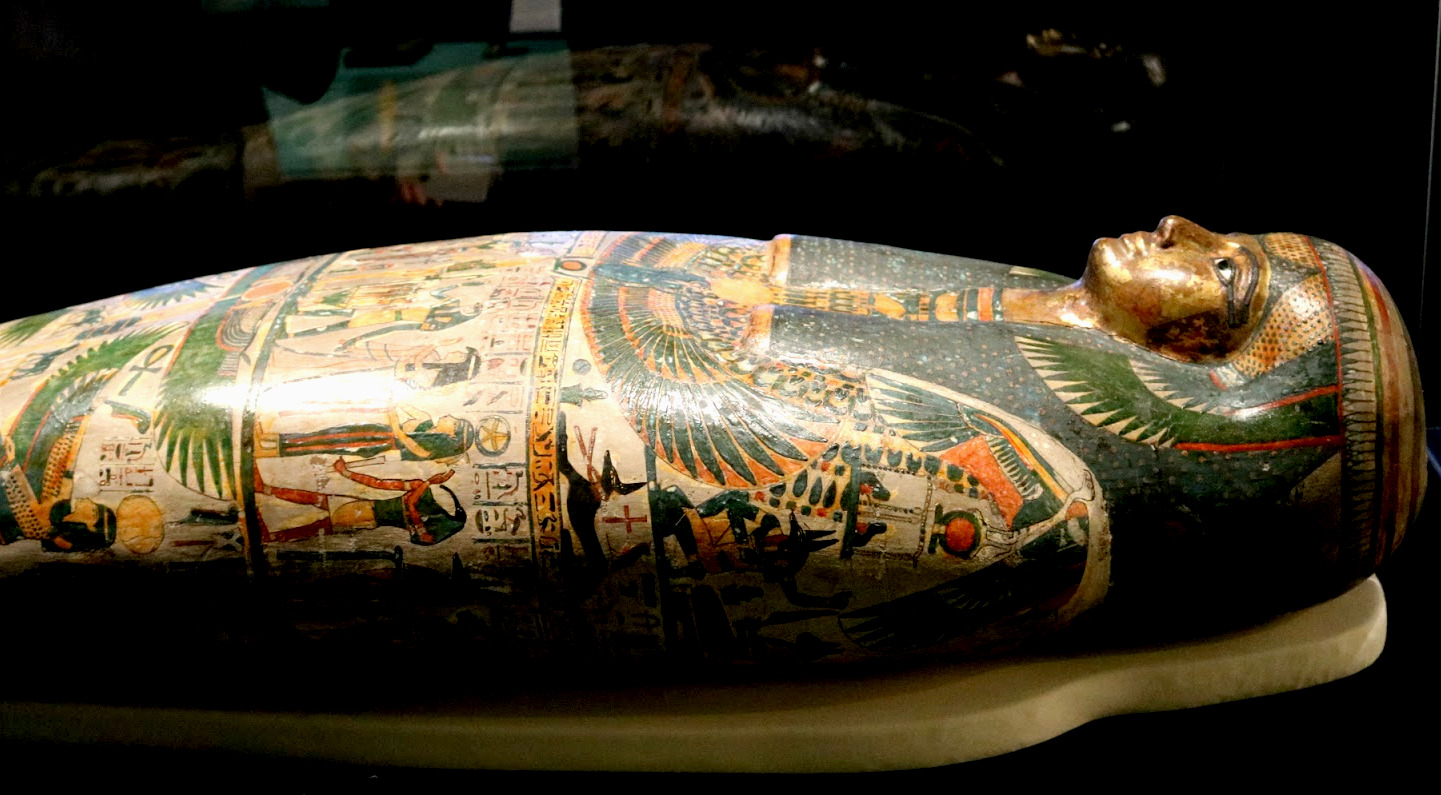The ancient Egyptians spent a lot of time creating hidden underground mausoleums, filled with treasure.
The most famed collection of such elaborate tombs is called "Valley of the Kings," located on the river Nile's west bank near Luxor.
A modern version of this is a library, an archive of stored knowledge for
those who do not yet know about life, now superceded in the digital age,
by the internet. A vast collection of intellectual treasure, history and
patents. Much of which is still kept secret, as proprietary know how. Such
as in manufacturing, medicines and engineering. Where state granted
protections are very limited in the real world.
Daily life in ancient Egypt was focused on enjoying every single moment of time they had and make it memorable as much as possible. And through their observation of the harmony and the balance of the universe, they were encouraged to live in the same way in order to achieve peace and happiness with themselves and others.
The
'Book of the Dead,' is an ancient Egyptian collection of mortuary texts made up of spells or magic formulas, placed in tombs and believed
by the ancients to protect and aid the deceased, to enter and then in the hereafter.
The ancient Egyptians could afford to love life as
they were blessed with ideal conditions, like very fertile land and a beautiful
climate - making living easy - and giving their intellectuals time to
reflect on their good fortune. They considered their life to be perfectly circular, to the point
where they believed that their must be an afterlife, as the eternal continuation of
the good life they enjoyed in mortal form on earth.
The
'Book of the Dead' collection included Coffin Texts dating from c. 2000 bce, Pyramid Texts dating from c. 2400 bce, and other writings. Later compilations included hymns to Re,
the sun
god. Numerous authors, compilers, and sources contributed to the work. Scribes copied the texts on rolls of
papyrus. They were often colourfully illustrated, and sold to individuals for burial use.

The
Egyptian Book of Life, on symbolism in Temples and Tomb art.
Many copies of the book have been found in Egyptian tombs, but none contains all of the approximately 200 known chapters. The collection, literally titled The Chapters of Coming-Forth-by-Day, received its present name from Karl Richard Lepsius, the German Egyptologist who published the first collection of the texts in 1842.
These
collections appear to be derived from Coffin Texts.
Coffin Texts are collections of ancient Egyptian funerary texts consisting of spells or magic formulas, painted on the burial coffins of the First Intermediate period (c. 21301938 bce) and the Middle Kingdom (1938c. 1630 bce). The Coffin Texts, combined with the Pyramid Texts from which they were derived, were the primary sources of the Book of the Dead, which was in prominent use during the New Kingdom and Late period. These three collections represent the most extensive body of Egyptian religious literature available to modern scholars.
Whereas, Pyramid Texts, are a collection of Egyptian mortuary prayers, hymns, and spells intended to protect a dead king or queen and ensure life and sustenance in the hereafter. The texts, inscribed on the walls of the inner chambers of pyramids, are found at Ṣaqqārah in several
5th and 6th dynasty pyramids, of which that of Unas, last king of the 5th dynasty, is the earliest known. The texts constitute the oldest surviving body of Egyptian religious and funerary writings available to modern scholars.
The
Book of Life, deals with entry into heaven and the future world.
BOOK OF THE DEAD: SPELLS
The Book of the Dead is made up of a number of individual texts and their accompanying illustrations. Most sub-texts begin with the word ro, which can mean "mouth", "speech", "spell", "utterance", "incantation", or "chapter of a book". This ambiguity reflects the similarity in Egyptian thought between ritual speech and magical power. In the context of the Book of the Dead, it is typically translated as either chapter or spell. In this article, the word spell is used.
At present, some 192 spells are known, though no single manuscript contains them all. They served a range of purposes. Some are intended to give the deceased mystical knowledge in the afterlife, or perhaps to identify them with the gods: for instance, Spell 17 is an obscure and lengthy description of the god Atum. Others are incantations to ensure the different elements of the dead person's being were preserved and reunited, and to give the deceased control over the world around him. Still others protect the deceased from various hostile forces or guide him through the underworld past various obstacles. Famously, two spells also deal with the judgement of the deceased in the Weighing of the Heart ritual.
Such spells as 2630, and sometimes spells 6 and 126, relate to the heart and were inscribed on scarabs.
The texts and images of the Book of the Dead were magical as well as religious. Magic was as legitimate an activity as praying to the gods, even when the magic was aimed at controlling the gods themselves. Indeed, there was little distinction for the Ancient Egyptians between magical and religious practice. The concept of magic (heka) was also intimately linked with the spoken and written word. The act of speaking a ritual formula was an act of creation; there is a sense in which action and speech were one and the same thing. The magical power of words extended to the written word. Hieroglyphic script was held to have been invented by the god Thoth, and the hieroglyphs themselves were powerful. Written words conveyed the full force of a spell. This was even true when the text was abbreviated or omitted, as often occurred in later Book of the Dead scrolls, particularly if the accompanying images were present. The Egyptians also believed that knowing the name of something gave power over it; thus, the Book of the Dead equips its owner with the mystical names of many of the entities he would encounter in the afterlife, giving him power over them.
The spells of the Book of the Dead made use of several magical techniques which can also be seen in other areas of Egyptian life. A number of spells are for magical amulets, which would protect the deceased from harm. In addition to being represented on a Book of the Dead papyrus, these spells appeared on amulets wound into the wrappings of a mummy. Everyday magic made use of amulets in huge numbers. Other items in direct contact with the body in the tomb, such as headrests, were also considered to have amuletic value. A number of spells also refer to Egyptian beliefs about the magical healing power of saliva.
ORDER OF CONSTRUCTION
Almost every Book of the Dead was unique, containing a different mixture of spells drawn from the corpus of texts available.
For most of the history of the Book of the Dead there was no defined order or structure. In fact, until Paul Barguet's 1967 "pioneering study" of common themes between texts, Egyptologists concluded there was no internal structure at all. It is only from the Saite period (26th Dynasty) onwards that there is a defined order.
The Books of the Dead from the Saite period tend to organize the Chapters into four sections:
- Chapters 116 The deceased enters the tomb and descends to the underworld, and the body regains its powers of movement and speech.
- Chapters 1763 Explanation of the mythic origin of the gods and places. The deceased is made to live again so that he may arise, reborn, with the morning sun.
- Chapters 64129 The deceased travels across the sky in the sun ark as one of the blessed dead. In the evening, the deceased travels to the underworld to appear before
Osiris.
- Chapters 130189 Having been vindicated, the deceased assumes power in the universe as one of the gods. This section also includes assorted chapters on protective amulets, provision of food, and important places.

The
Egyptian Book of Life (The
Mummy 1999)
The spells in the Book of the Dead depict Egyptian beliefs about the nature of death and the afterlife. The Book of the Dead is a vital source of information about Egyptian beliefs in this area.
PRESERVATION
One aspect of death was the disintegration of the various kheperu, or modes of existence. Funerary rituals served to re-integrate these different aspects of being. Mummification served to preserve and transform the physical body into sah, an idealised form with divine aspects; the Book of the Dead contained spells aimed at preserving the body of the deceased, which may have been recited during the process of mummification. The heart, which was regarded as the aspect of being which included intelligence and memory, was also protected with spells, and in case anything happened to the physical heart, it was common to bury jewelled heart scarabs with a body to provide a replacement. The ka, or life-force, remained in the tomb with the dead body, and required sustenance from offerings of food, water and incense. In case priests or relatives failed to provide these offerings, Spell 105 ensured the ka was satisfied. The name of the dead person, which constituted their individuality and was required for their continued existence, was written in many places throughout the Book, and spell 25 ensured the deceased would remember their own name. The ba was a free-ranging spirit aspect of the deceased. It was the ba, depicted as a human-headed bird, which could "go forth by day" from the tomb into the world; spells 61 and 89 acted to preserve it. Finally, the shut, or shadow of the deceased, was preserved by spells 91, 92 and 188. If all these aspects of the person could be variously preserved, remembered, and satiated, then the dead person would live on in the form of an akh. An akh was a blessed spirit with magical powers who would dwell among the gods.
AFTERLIFE
The nature of the afterlife which the dead people enjoyed is difficult to define, because of the differing traditions within Ancient Egyptian religion. In the Book of the Dead, the dead were taken into the presence of the god Osiris, who was confined to the subterranean Duat. There are also spells to enable the ba or akh of the dead to join Ra as he travelled the sky in his sun-barque, and help him fight off Apep. As well as joining the Gods, the Book of the Dead also depicts the dead living on in the 'Field of Reeds', a paradisiac likeness of the real world. The Field of Reeds is depicted as a lush, plentiful version of the Egyptian way of living. There are fields, crops, oxen, people and waterways. The deceased person is shown encountering the Great Ennead, a group of gods, as well as his or her own parents. While the depiction of the Field of Reeds is pleasant and plentiful, it is also clear that manual labour is required. For this reason burials included a number of statuettes named shabti, or later ushebti. These statuettes were inscribed with a spell, also included in the Book of the Dead, requiring them to undertake any manual labour that might be the owner's duty in the afterlife.[38] It is also clear that the dead not only went to a place where the gods lived, but that they acquired divine characteristics themselves. In many occasions, the deceased is mentioned as "The Osiris [Name]" in the Book of the Dead.
The path to the afterlife as laid out in the Book of the Dead was a difficult one. The deceased was required to pass a series of gates, caverns and mounds guarded by supernatural creatures. These terrifying entities were armed with enormous knives and are illustrated in grotesque forms, typically as human figures with the heads of animals or combinations of different ferocious beasts. Their
names - for instance, "He who lives on snakes" or "He who dances in
blood" - are equally grotesque. These creatures had to be pacified by reciting the appropriate spells included in the Book of the Dead; once pacified they posed no further threat, and could even extend their protection to the dead person. Another breed of supernatural creatures was 'slaughterers' who killed the unrighteous on behalf of Osiris; the Book of the Dead equipped its owner to escape their attentions. As well as these supernatural entities, there were also threats from natural or supernatural animals, including
crocodiles, snakes, and beetles.
JUDGMENT
If all the obstacles of the Duat could be negotiated, the deceased would be judged in the "Weighing of the Heart" ritual, depicted in Spell 125. The deceased was led by the god
Anubis into the presence of Osiris. There, the dead person swore that he had not committed any sin from a list of 42 sins, reciting a text known as the "Negative Confession". Then the dead person's heart was weighed on a pair of scales, against the goddess Maat, who embodied truth and justice. Maat was often represented by an ostrich feather, the hieroglyphic sign for her name. At this point, there was a risk that the deceased's heart would bear witness, owning up to sins committed in life; Spell 30B guarded against this eventuality. If the scales balanced, this meant the deceased had led a good life. Anubis would take them to Osiris and they would find their place in the afterlife, becoming maa-kheru, meaning "vindicated" or "true of voice". If the heart was out of balance with Maat, then another fearsome beast called Ammit, the Devourer, stood ready to eat it and put the dead person's afterlife to an early and unpleasant end.
This scene is remarkable not only for its vividness but as one of the few parts of the Book of the Dead with any explicit moral content. The judgment of the dead and the Negative Confession were a representation of the conventional moral code which governed Egyptian society. For every "I have not..." in the Negative Confession, it is possible to read an unexpressed "Thou shalt not". While the Ten Commandments of Jewish and Christian ethics are rules of conduct laid down by a perceived divine revelation, the Negative Confession is more a divine enforcement of everyday morality. Views differ among Egyptologists about how far the Negative Confession represents a moral absolute, with ethical purity being necessary for progress to the Afterlife. John Taylor points out the wording of Spells 30B and 125 suggests a pragmatic approach to morality; by preventing the heart from contradicting him with any inconvenient truths, it seems that the deceased could enter the afterlife even if their life had not been entirely pure. Ogden Goelet says "without an exemplary and moral existence, there was no hope for a successful afterlife", while Geraldine Pinch suggests that the Negative Confession is essentially similar to the spells protecting from demons, and that the success of the Weighing of the Heart depended on the mystical knowledge of the true names of the judges rather than on the deceased's moral behaviour.

Book
of the Dead
A mummy can be a dead human or an animal whose soft tissues and organs have been preserved by either intentional or accidental exposure to chemicals, extreme cold, very low humidity, or lack of air, so that the recovered body does not decay further if kept in cool and dry conditions.
Mummies of humans have been found on every continent, both as a result of natural preservation through unusual conditions, and as cultural artifacts.

Mummification
is a process where the bodies (typically) of dead kings and queens of
Egypt were preserved by treating the skin with embalming ointments, and
wrapping the subject's corpse in bandages, also soaked with preservative
chemicals. In addition, the organs of the royal subjects were removed and
placed in canopic jars. When the Egyptians did something, they did it
properly. In this case, looking after the dead, became artform.
